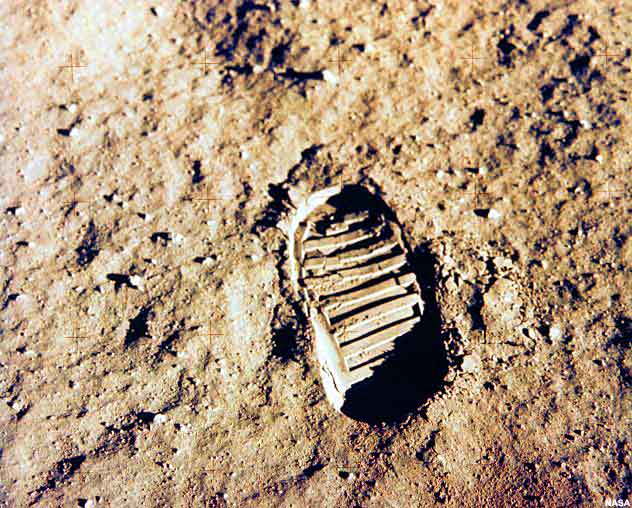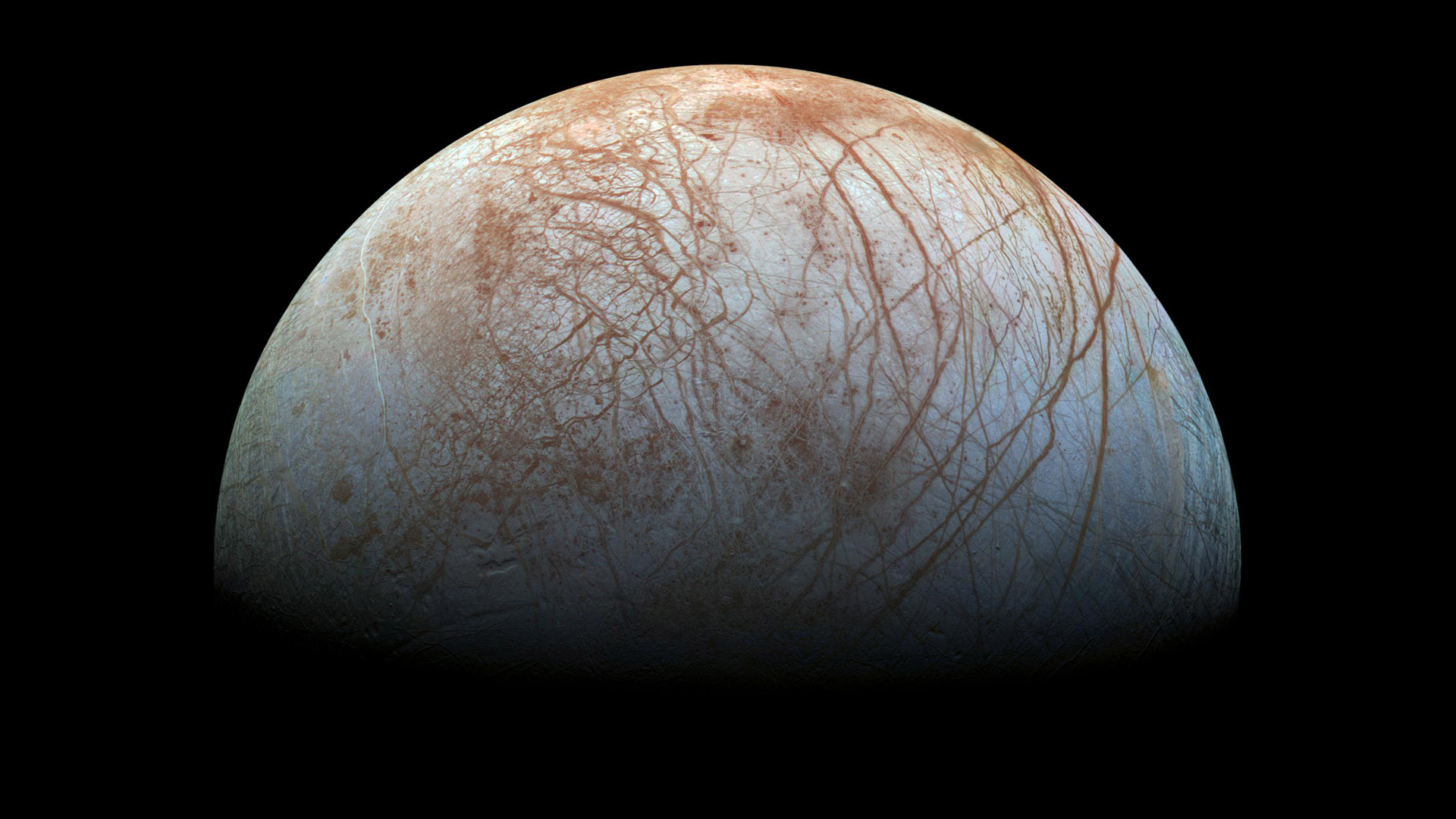'Missing' Moon Dust Turns Up at St. Louis Auction

NASA has recovered a few grains of moon dust after learning that the lunar material was set to be auctioned off in St. Louis this month, federal prosecutors announced Thursday (June 23).
There's not much of the stuff — just some residue attached to a piece of transparent tape one-eighth of an inch (3 millimeters) wide. But its origin and history are what make the dust special: It came down to Earth in July 1969 with the Apollo 11 astronauts, who were the first humans to set foot on the lunar surface.
The United States Attorney's Office for Eastern Missouri learned in early June that the moon dust was going to be auctioned off in St. Louis. NASA investigators then contacted the auction house, Regency-Superior Auctions, which withdrew the material, prosecutors said.
Officials from the U.S. Attorney's Office took possession of the tape last Friday (June 17), then handed it over to NASA. The material was returned to the agency's Johnson Space Center in Houston on Monday (June 20). [Photos: Our Changing Moon]
The federal government regards the Apollo lunar samples as national treasures. It has never knowingly given moon rocks or loose moon dust to private individuals. But no arrests have been made in this case.
The woman who consigned the tape to Regency-Superior inherited it from her late husband, who apparently acquired it in good faith, officials said. The woman's name has not been released.
"In this particular situation, there was no wrong done," said space history expert Robert Pearlman, editor of the website collectSPACE.com, which is a SPACE.com partner. "Everyone cooperated."
Breaking space news, the latest updates on rocket launches, skywatching events and more!
Selling is not a crime
It's not illegal per se to sell lunar materials, Pearlman said. It all depends on how the seller came into possession of the samples. And people have gotten a hold of moon dust legally.
For example, NASA gave Apollo astronauts the patches from the outsides of their spacesuits, which had become impregnated with lunar dust. And the agency once released from its inventory a so-called "temporary stowage bag" used on one of the Apollo flights to hold small items during the mission.
In the course of the flight, the items placed in the bag stained the interior with moon dust. When the bag was later sold during an Oct. 2000 auction, its new owner found some smatterings of the remaining moon dust inside when he opened it up, Pearlman said.
A dusty film cartridge
The moon dust to be auctioned in St. Louis this month was originally lodged in the film cartridge of a camera used by Apollo 11 astronauts, who apparently dropped it on the surface of the moon.
Back then, a NASA employee named Terry Slezak was in charge of processing the film brought back from the Apollo missions. When he opened this particular cartridge, dust poured out, getting all over his hands. Slezak thus became the non-astronaut ever to touch lunar material with his bare hands.
According to Slezak, he used a towel and some transparent tape to clear the dust off the film, the New York Times reported.
The Apollo 11 astronauts later presented Slezak with a signed commemorative poster board, complete with pictures showing a smiling Slezak holding his dusty hand up for the camera. Slezak affixed the dusty piece of tape to the poster.
"I thought that would be kind of neat," Slezak told the Times.
Slezak sold the poster at auction in 2001 for just over $25,000, Pearlman said. While Slezak was never authorized to take the dust-flecked tape, he maintains that NASA has never questioned him about the matter.
Later, the dusty tape from the poster board was cut up into tiny pieces, some of which were also put up for sale. A piece three-eighths of an inch (9 mm) wide has sold for about $6,000, and slivers the size of the one Regency-Superior was going to auction off have been offered at nearly $1,000, Pearlman said.
Moon rocks for sale?
NASA astronauts brought 842 pounds (382 kilograms) of lunar material home to Earth between 1969 and 1972, souvenirs from their Apollo moonwalking jaunts. A court has valued this stuff at $1.44 million per ounce ($50,800 per gram), based on how much those NASA missions cost.
The space agency has given small amounts of moon material to national and state governments over the years. But NASA hangs on tightly to the rest of it.
"They track it very well," Pearlman said, adding that less than 1 ounce (28 g) of the lunar samples is thought to be unaccounted for.
But moon rocks, real or fake, are circulating on the market.
Just last month, NASA officials busted a woman who was trying to sell a purported moon rock for $1.7 million. The moon rock sting went down in a Denny's restaurant in Lake Elsinore, Calif.
While the auction of this tiny tape sliver seems to be small potatoes by comparison, Pearlman said he understands why NASA works so hard to recover lunar materials.
"You can't undo precedent," Pearlman said. "They want to be able to defend when there are large missing moon rocks, if that ever comes up. So they have to respond to every report that they receive."
Preliminary analysis of the dust on the tape indicates that it likely is of lunar origin, though it will take two to three weeks to confirm this definitively, prosecutors said.
You can follow SPACE.com senior writer Mike Wall on Twitter: @michaeldwall. Follow SPACE.com for the latest in space science and exploration news on Twitter @Spacedotcom and on Facebook.
Join our Space Forums to keep talking space on the latest missions, night sky and more! And if you have a news tip, correction or comment, let us know at: community@space.com.

Michael Wall is a Senior Space Writer with Space.com and joined the team in 2010. He primarily covers exoplanets, spaceflight and military space, but has been known to dabble in the space art beat. His book about the search for alien life, "Out There," was published on Nov. 13, 2018. Before becoming a science writer, Michael worked as a herpetologist and wildlife biologist. He has a Ph.D. in evolutionary biology from the University of Sydney, Australia, a bachelor's degree from the University of Arizona, and a graduate certificate in science writing from the University of California, Santa Cruz. To find out what his latest project is, you can follow Michael on Twitter.
